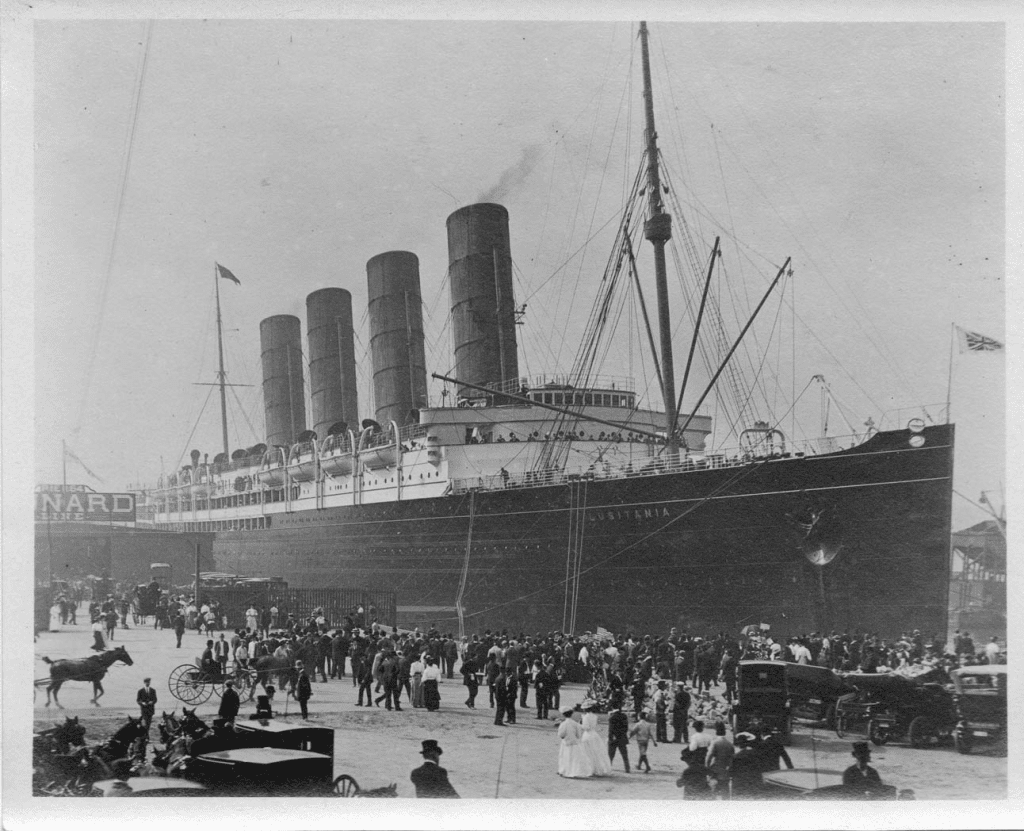On May 7, 1915, a single torpedo fired by a German U-boat changed the course of the 20th century. The RMS Lusitania, a British ocean liner, was struck off the coast of Ireland and sank in just 18 minutes. Of the nearly 2,000 people aboard, 1,198 lost their lives including 114 American citizens. This catastrophic event didn’t just shock the world it nudged a neutral United States closer to the devastating conflict that was World War I.
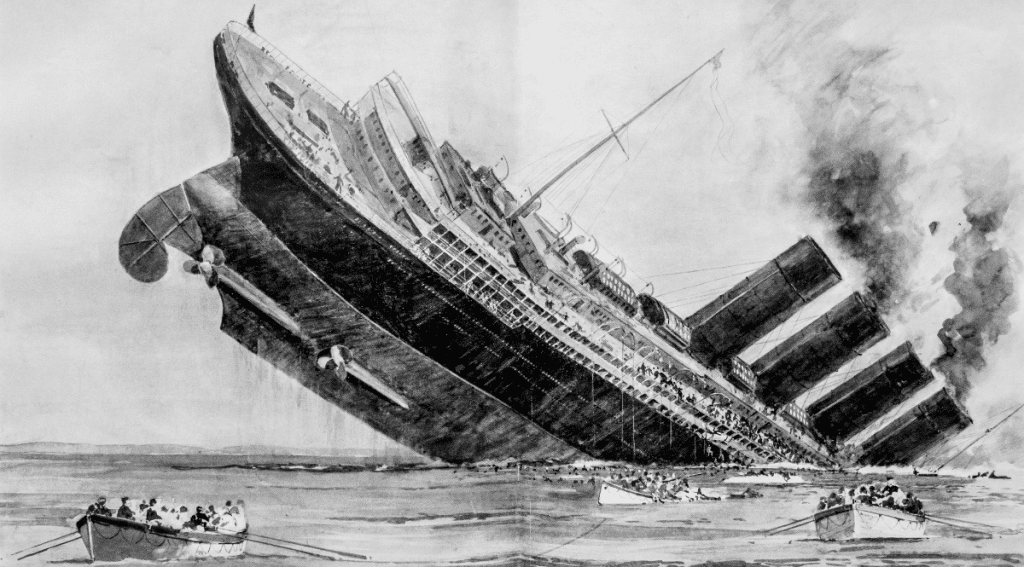
A Luxury Liner in a Time of War
The RMS Lusitania was more than a passenger ship. Launched in 1906 by the Cunard Line, it was one of the most luxurious and fastest vessels of its time. With opulent dining rooms, grand staircases, and spacious accommodations, it symbolized a golden age of ocean travel.
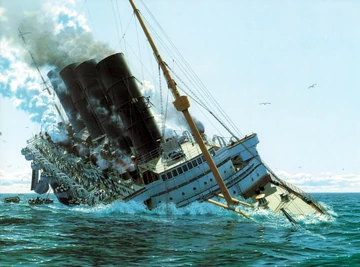
However, by 1915, the Atlantic was no longer safe. World War I had engulfed Europe, and Germany had declared the waters around the British Isles a war zone. German submarines, or U-boats, prowled the seas, threatening any ship, military or civilian.
Despite these dangers, the Lusitania set sail from New York to Liverpool on May 1, 1915. The German embassy in the U.S. had issued warnings to avoid sailing on British ships, but many passengers believed the liner was too fast and prestigious to be targeted.
Video:
THE SINKING of the LUSITANIA (Videoclip)
The Attack
Six days into the voyage, as the Lusitania neared the Irish coast, it entered the hunting ground of German U-boat U-20, commanded by Captain Walther Schwieger. At 2:10 p.m., the submarine fired a single torpedo.
The explosion that followed was more powerful than expected likely due to a second internal blast, which remains a subject of debate among historians. Within minutes, the massive liner began to list and sink. Lifeboats were deployed, but chaos, panic, and the ship’s severe tilt made evacuation nearly impossible.
In just 18 minutes, the Lusitania disappeared beneath the waves.
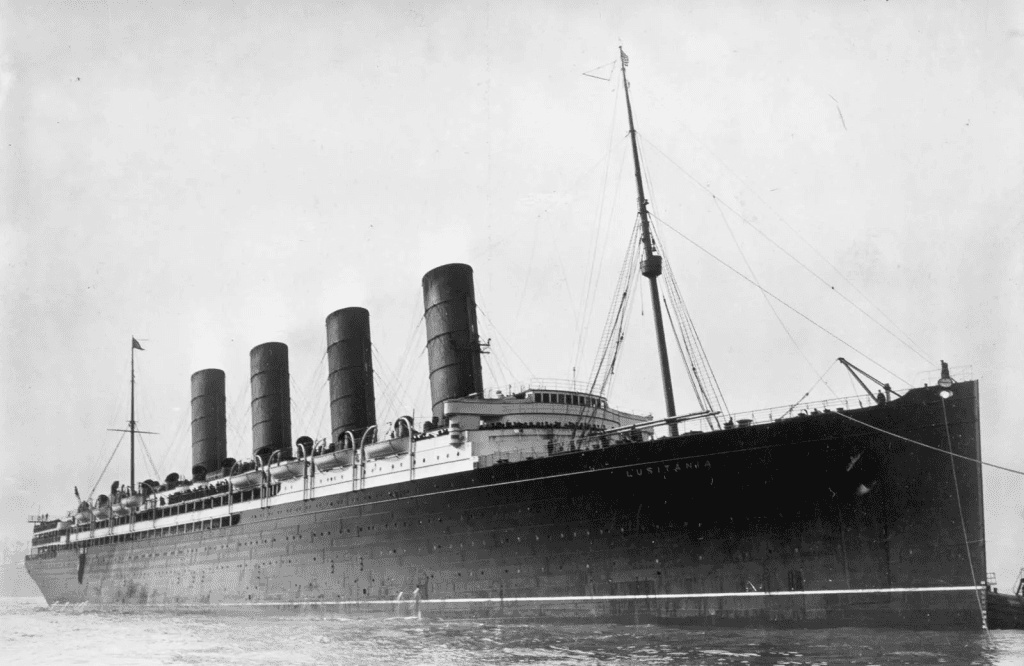
Loss and Outrage
The death toll was staggering: 1,198 people, including men, women, and children. Among them were 114 Americans, including prominent figures such as Alfred Gwynne Vanderbilt.
News of the sinking sent shockwaves around the world. In Britain, it fueled anti-German sentiment. In the United States, which had been determined to remain neutral, it sparked outrage. Newspapers ran headlines decrying the attack, and public opinion began to shift.
Video:
Lusitania Sinks in REAL TIME | 18 Minutes of Terror
President Woodrow Wilson resisted immediate calls for war, instead demanding an apology and assurances from Germany that civilian ships would not be targeted. Germany responded with mixed messages, and tensions continued to build.
A Step Toward War
Though the United States would not enter the war for another two years, the sinking of the Lusitania was a turning point. It marked a moment when many Americans began to see the war as not just a European conflict, but a threat to innocent lives everywhere.
Germany’s unrestricted submarine warfare continued, and by 1917, after repeated attacks on U.S. ships and the infamous Zimmerman Telegram, the United States officially entered World War I.
The Lusitania tragedy had laid the emotional and political groundwork.
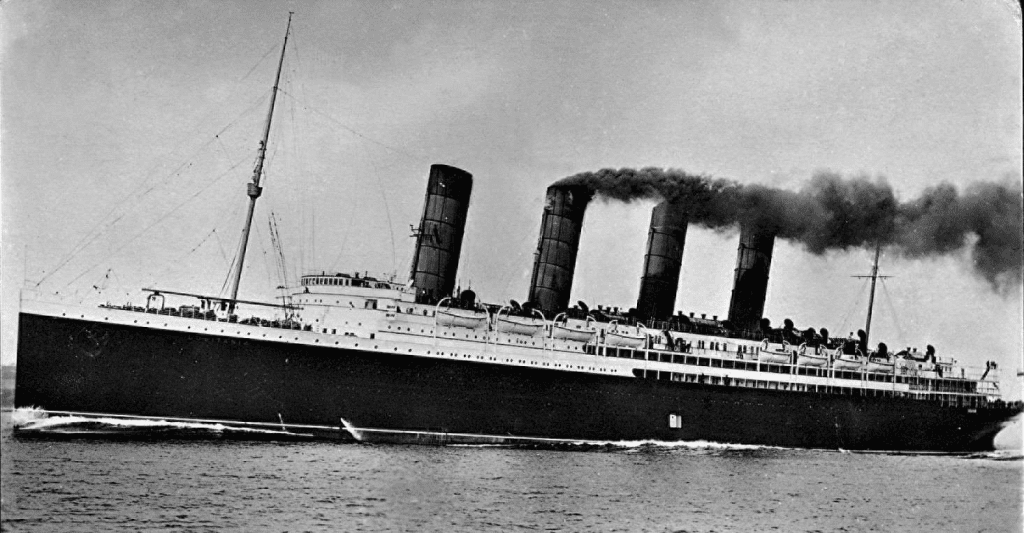
Legacy and Lessons
More than a century later, the sinking of the Lusitania remains a powerful symbol of the cost of war and the vulnerability of civilians in times of conflict. It reminds us how quickly the line between neutrality and involvement can disappear and how a single act of violence can reverberate through history.
The wreck of the Lusitania still rests on the seafloor near Ireland, a silent reminder of the lives lost and the global consequences that followed.
